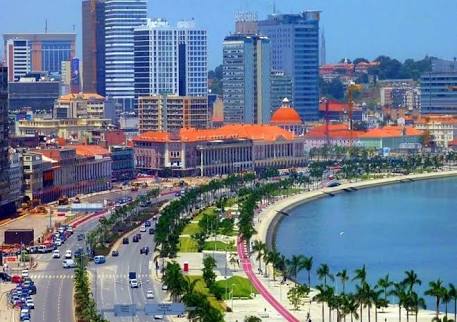Only about 70% of the population is literate, and the rate drops to around 60% for women
ARNHEM, Netherlands On a personal level the statistics are grim:
More than 40 percent of Angolans live below the poverty line;
Unemployment is widespread, especially among the large young-adult population;
Only about 70% of the population is literate, and the rate drops to around 60% for women;
Setting the Stage
With the election of President Lourenço in September 2017 a new optimism griped the country. The “promise” of more transparency and the building of a new civil society has given President Lourenço the needed legitimacy to launch his presidency. Given the huge dependency on the petro-economy his first task was to ensure that this cash cow could continue to provide the country the necessary funding so that other important projects—housing, education, health and drink water issues could be addressed. And of course economic diversification was also part of the mix. The issues requiring solving were large and looming and the oil market was not co-operating.
In September 2015 the rig count in Angola was a robust 22; by August of 2018 this decreased to 4 rigs! With oil hovering at around US$75 per barrel one would expect that oil production would be near the 1.75 mbpd instead of coming in at 1.4 mbpd as is currently the case. Is this the new reality? This requires a further explanation.
In the downturn no new projects were implemented. The only project to be carried out was Total’s Block 32 Kaombo Project, which had been launched in 2014 and is scheduled for production shortly. Aside from that the activity level for the last three years for Offshore Angola has been very quiet. To date. Yet there are little signs that this will change in 2019.
Under the radar screen there have been significant changes in the industry. Early after being elected President Lourenço held a historical meeting with the leaders of the oil and gas industry. The majors, in particular BP, Chevron and ExxonMobil, insisted that a new agency under the direction of Minpet, be given the responsibility of concessionaire.
In the past Sonangol had two roles: that of Concessionaire, a highly judicious key role which gave it the power and legitimacy it had achieved; and being a state oil company with it’s responsibilities for exploration and development of the resources. The decision to strip Sonangol of it’s Concessionaire was then taken, but the announcement was only recently done.
NOGA (The Oil and Gas Authority)
NOGA (The Oil and Gas Authority) is now responsible for the task of Concessionaire and will oversee operators’ plans for 2019. How will this transpire? Given that this was high on the wish list of the majors it is anticipated that this will help kickstart new exploration.
The decision to create such an agency is also an attempt to stop the further slide of oil production currently pegged at 1.4 mbpd. Expect NOGA to be buggy-whipped and fast forwarded because the goal is to restore production back to a level of 1.8 mbpd…certainly when Angola is about to have talks with the IMF for re-financing its debt it is no coincidence that NOGA has now been unveiled.
Other key points which have led to a new consensus which include:
Ensuring a competitive fiscal – economic regime
There is a recognition that there is a global competition for project funding and therefore to ensure that exploration on both onshore and offshore blocks are attractive, it is important that the region has attractive financial terms and conditions.
In the past there was a rush to participate in Offshore Angola. Huge signing bonuses were common place. That has now changed. The majors publicly state that Angola must compete with other offshore theatres. Back in the early 1990s Angola was a new market and success was guaranteed. Witness Total’s Golden Block 17 and ExxonMobil’s success in Block 15. Yet these projects are examples of maturing fields having perhaps seen their apex. Thus the need for new innovations to ensure that the lives of these fields can be prolonged, and also the need for further exploration.
Deepwater Prospects
There is sufficient evidence that in terms of geology there is much good news: deepwater prospects are excellent, but more modeling work is required to better understand the pre-salt basins.
For the deepwater market there is a need for developing the offshore completion market; with the continued downturn the light intervention market will get more attention. There is a need for bringing in light intervention vessels.
Developing Gas Strategy
In the pre-salt basins there is evidence of natural gas, leading to suggestions that the natural gas will become a fuel of choice to help stimulate the building of an industrial corridor. Perhaps also an important key to industrial diverfication.
In the first half of 2017 gas legislation was passed : enabling for the first time for companies to become the owner of the natural gas that they had explored. In the past this remained the property of the state. The gas legislative has provided the necessary incentives for companies to explore, produce and process natural gas. A key question is how should such a gas road map be developed?
Key aspects for such a Gas Master Pan were presented at the EnergyWise 2017 Africa Energy Summit by Dr Qi Chen. These include:
Long term planning for gas development and utilization;
Guiding strategy document for national development in gas sector;
Well to well: reservoir to utilizing plants;
Gas production, infrastructure, movement and utilization plans;
Fit into national energy development strategy.
Utilization Options
Electricity-commercial and residential
Fertilizers – ammonia and urea
Transportation – CNG or GTL liquid fuel
Industrial –methanol and ethylene/propylene
Developing the onshore blocks
Given that in the past the focus has been on developing the offshore assets, little attention has been devoted to the Onshore Kwanza & Congo Basins. A roadshow had been organized three years ago but the terms and conditions found little traction with potential investors. Any new initiatives should provide flexible contracts and work packages.
Conclusions
Expect a resurgence of the exploration activities both offshore and on land;
Production enhancement projects to extend the life of existing fields will commence;
New activities will also provide an economic boom to the service sector;
Expect a doubling of the rig rate;and
Perhaps not in 2019 but within the next 18 months that production will again rise above the 1.5mbpd.
Less sure is the future of Angola’s refining capacity. There are plans to expand the Luanda refinery which meets 20% of domestic demand. A new date(2022) has been set when the Lobito refinery will be up and running. And there are plans to build a refinery in Cabinda.
Hopefully the country can move ahead and start to implement an industrial strategy which can stimulate various sectors, including the key agricultural sector.













